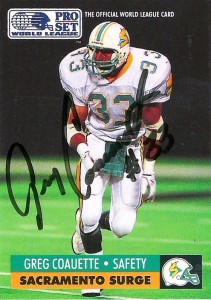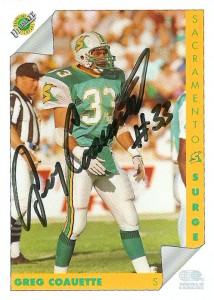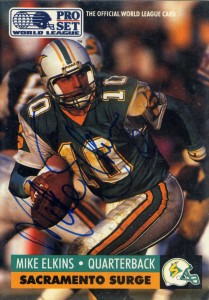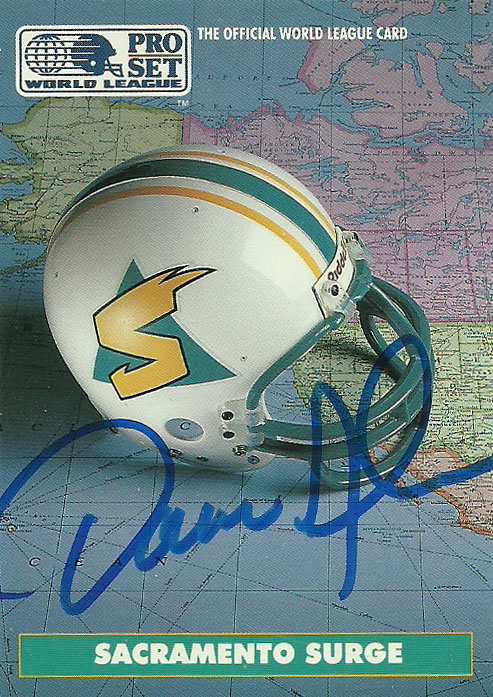
Coach: Kay Stephenson
Stadium: Hornet Stadium
Records: (1991) 3-7 (1992) 8-2*
* World Bowl II Champs

BACKGROUND:
The Sacramento Surge were one of the founding franchises of the World League of American Football. Owned by Fred Anderson, the team also had Jack Youngblood working in the front office with Doug Cosbie. The Surge played its home games at Hornet Stadium in Sacramento.
The Surge was the winner overall when selecting team names- thanks in part to its connection to the computer industry in Northern California. The Surge name has a secondary meaning as Sacramento sits upon a river delta on the ‘surging’ Sacramento river- which gives the origin to the teal triangle behind the ‘S’ on the logo.
Coached by former Buffalo Bills and WFL player/coach Kay Stephenson, the Surge ran a variant of the West Coast offense. Future head coach Jim Haslett would take charge of the defensive line, linebackers, and special teams.
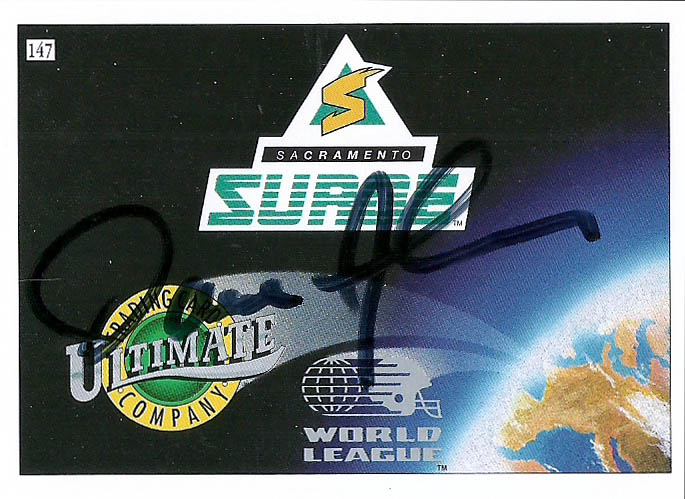
1991:
The Surge played their opener on USA Network against the Raleigh-Durham Skyhawks and beat them 9-3. An initial crowd of over 15,000 showed up to watch the team notch its first victory in Sacramento. Throughout the season the team steadily improved its attendance figures and in their finale of 1991 against the Monarchs, over 21,000 fans showed up.
They’d also prove to be the Frankfurt Galaxy‘s Achilles heel, with the Surge sweeping two wins out from under Frankfurt, and preventing them from making the playoffs. That would be it for the Surge their initial season out of the gate, as they suffered some pretty bad breaks, losing two games in a row in overtime, and 4 other contests by 8 points or less. Sacramento in the end finished a disappointing 3-7.
At quarterback Mike Elkins virtually took all the snaps for the team after unseating Ben Bennett in training camp. At runningback the Surge were lead by the three headed monster of Victor Floyd, Paul Frazier, and Mel Farr, (who finished second on the team in receptions with 23 catches). Carl Parker was a machine, leading the team from scrimmage at wide receiver with 801 yards receiving and 127 more on punt returns. Along the offensive line Richard Stephens constantly was mentioned as one of the WLAF’s ‘most intriguing’ products at tackle, and John Buddenberg helped lead the way at guard.
The defense boasted former first round choice Shawn Knight at defensive end, while Pete Najarian championed the linebacker corps. Greg Coauette earned first team All-World honors at safety for his headhunting in the secondary, lining up next to equally intimidating Tom Gerhart.
1992:
In 1992, the team gutted a good portion of their roster starting at quarterback. The team made their best move up top bringing in savvy NFL veteran David Archer. Gone was the whole runningback stable, which was replaced most notably by Mike Pringle (who would go on later to become one of the CFL’s greatest players). Carl Parker remained at wide receiver, but much of the pressure was removed from him with the signing of another future CFL great Eddie Brown. Stefon Adams and Mark Stock also were brought in to improve the wide receiver corps.
Defensively, the team went in a new direction, now coached by Jim Haslett after the departure of Charlie Sumners. Among his players, the team was loaded up front after Curtis Wilson to Ohio to secure #1 overall pick George Bethune, and later in the draft future Seattle Seahawk, Mike Sinclair. Pete Najarian returned again to play linebacker, along with Mike Jones (who is the hero who made the tackle to stop the Titans from winning SuperBowl XXXIV). Tom Gerhart also was integral to the secondary, white Greg Coauette was traded, replaced by Louis Riddick and Herb Welch at safety.
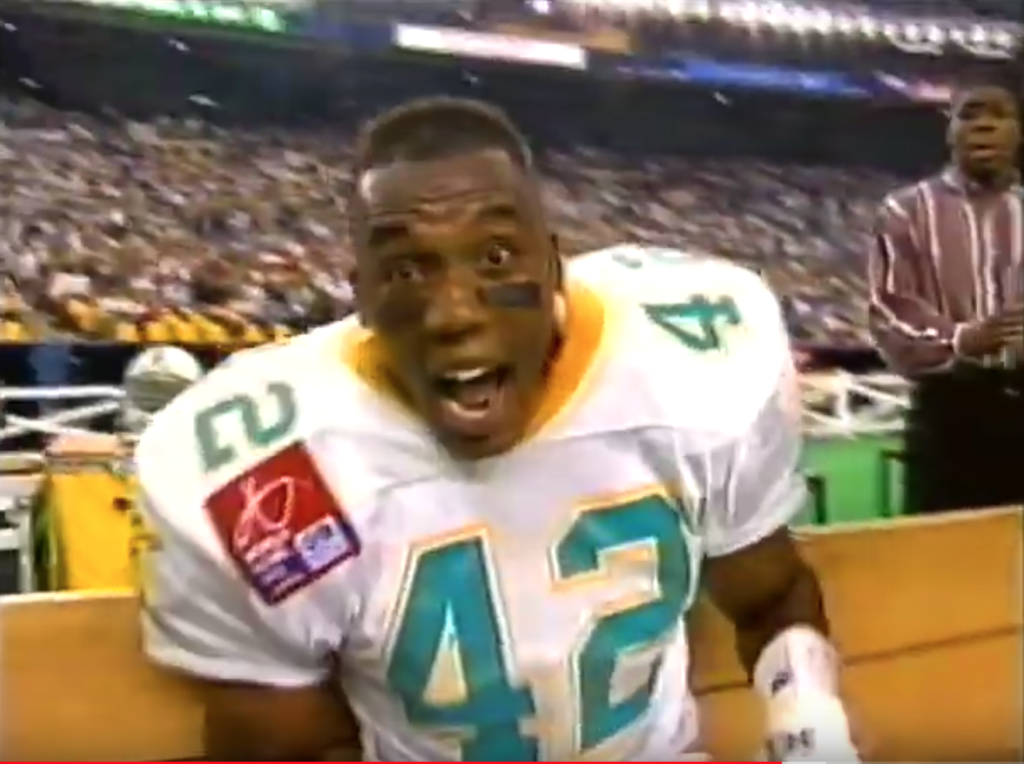
The Surge turned it completely around in 1992, with 3 wins to start the season, they’d charge into week 4 and lose an exciting match to the Riders 23-20 in one of the leagues’ most best games in history broadcast on USA network. David Archer would be intercepted to end the game in overtime. They’d lose a second in a row to Birmingham, but again pick back up where they left off, winning the next 5 and beating the Riders in San Antonio to make the playoffs in a do or die contest. The Sacramento Surge then beat the Barcelona Dragons in the playoffs 17-15 and notched World Bowl honors with a 21-17 victory over Scott Mitchell and the Orlando Thunder.
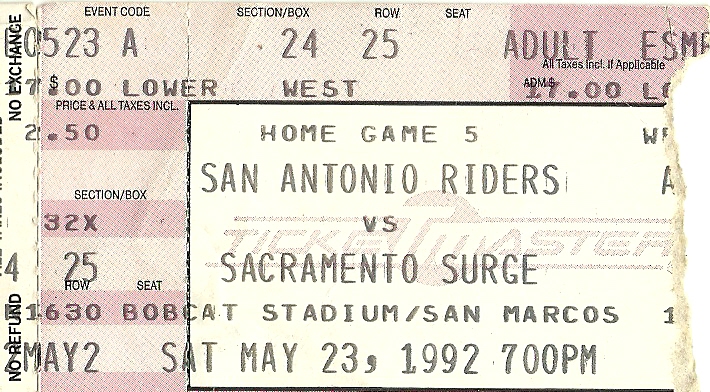
David Archer was named MVP of World Bowl II and captured the offensive MVP trophy. Wide receiver Downtown Eddie Brown, amazingly had over 1000 yards receiving en route to earning 1st team World Honors. John Buddenberg at guard also received World League Honors blocking up front for Mike Pringle. On defense, Mike Sinclair finished 2nd in sacks (10) and Bethune 3rd (7). Sinclair would be the only defender to earn WLAF honors.
NOTES:
Most notable about the Sacramento Surge is that they’d be the only North American Team to post a 3-0 record against the Frankfurt Galaxy.
The Surge also had hoped to draft Stan Gelbaugh in 1991 (after defensive assistant Jim Haslett encouraged Gelbaugh to return to play football), however they passed on him in their supplemental draft, and the Monarchs were able to take him instead.
Bill Goldberg was a notable name, as he’d later become a wrestler by the same name for primarily WCW.
American Airlines partnered with the WLAF to produce trading cards for the Surge in 1991- but as since they are not really ‘canon’ in the trading card market, I haven’t picked any of them up.
AFTERMATH:
After the 1992 season, the WLAF reorganized, but Sacramento would not be without football for long as Fred Anderson took his franchise to the CFL and became the Gold Miners. Unable to re-establish a fan base in Sacramento the team moved to San Antonio and became the Texans in 1995, but folded after the season when the CFL reorganized.
The Surge in the end though are still fondly remembered by many of the citizens of the city of Sacramento to this day. Although sometimes rumored to be a possible destination for the NFL’s Raiders, Sacramento would have to wait until 2009 for the return of a football franchise, in the form of the Mountain Lions of the UFL. -The franchise later folded in 2012.
The Surge name has lived on in lore however, and was adopted by a local soccer team in 2012. The name also had been thrown around as one of the finalists for the Seattle XFL 2020 team
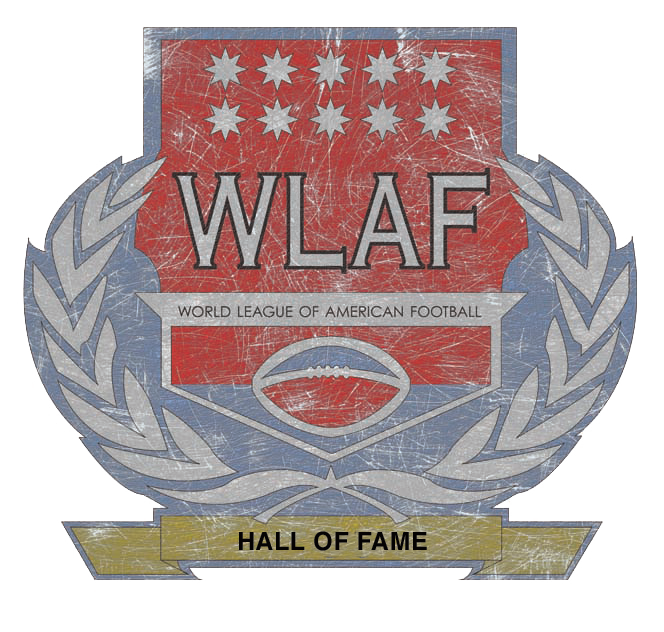
HC- Kay Stephenson
Front Office- Jack Youngblood
DC- Jim Haslett
QB- Mike Elkins, David Archer, Ben Bennett
RB- Victor Floyd, Mike Pringle, Tony Burse
OL- Richard Stephens, Curtis Wilson, John Buddenberg
WR- Carl Parker, Eddie Brown
TE- Mel Farr
DL- Shawn Knight, George Bethune, Saute Sapolu, Bill Goldberg
LB- Pete Najarian, Basil Proctor
DB- Greg Coauette, Tom Gerhart, Herb Welch, Stefon Adams
K- John Nies
At this time I am still missing autographs on these cards from:
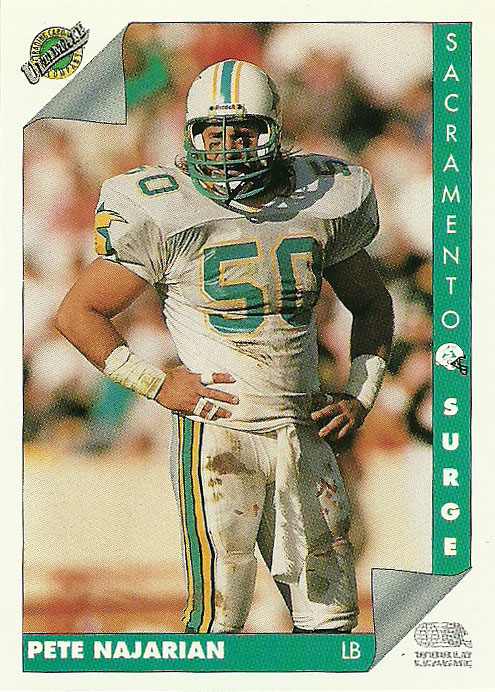
Wild Card WLAF 1992:
Michael Jones
Corian Freeman
Paul Green
Mike Sinclair
Ultimate WLAF 1992:
Mike Adams
Paul Frazier (DEC)
Pete Najarian
